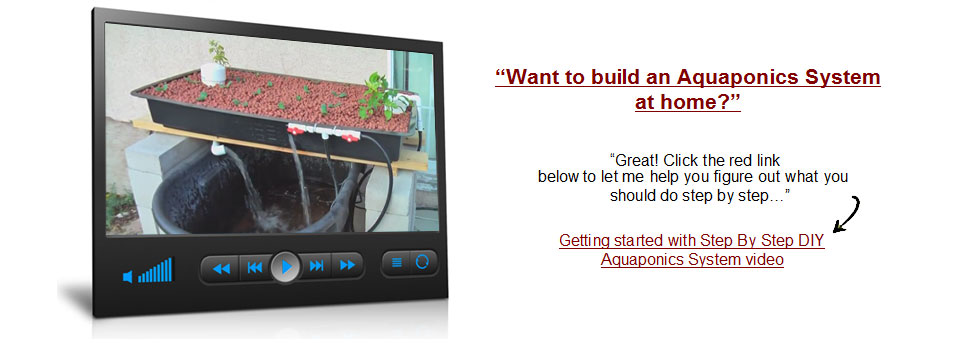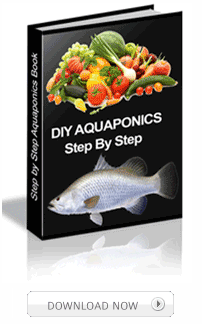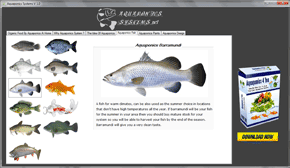
Aquaponics Design
To begin designing an aquaponics system you need first to define why you want to establish it. Your motivation could be simply an interesting and a fascination about the whole idea of aquaponics systems and the gardening issues and producing organic foods. Any ways, the end use of the system would be either one of two uses: home food production, or commercial production. This end use is what basically differentiate the type and place of the system you are about to begin.
In case of commercial production project, you will need to do a lot of research and calculations including the cost and return on investment and the space you need. As for the space, it will not be less than eighth acre. With a regard to the money, you must carefully study how much it will cost you and how long it is going to take before you make your first money from this project. You might also hire an expert for a Feasibility Study. As an advice, you will better be very careful about what you do.
If your purpose is to produce organic foods just for home uses then it is much easier than the commercial use purpose. Now the considerations you need to take into account in this case are pretty obvious. For an ideal design do not forget to choose the right location and the best system.
1- Location:
Place your aquaponics system according to the weather and the free space you have. Mostly a backyard, if you have one, would be suitable Location to set your aquaponics system. However, you might not be lucky enough to have the appropriate climate out there. In this case, you can divide the year and keep the system in the backyard through the suitable seasons, then when it gets hot or cold, relocate the system indoors or just shut it down until the right time comes back. If it annoys you, there are two more options. One is to set up the system indoors throughout the year. Another option is to build up a greenhouse and set your system in there.
-
Indoors:
To grow plants healthily indoors you need to be aware of their natural environmental conditions throughout the four seasons so you can successfully simulate them. Plants usually experience a day_to_night fluctuating temperature for no less than 10 degrees F. The similar temperature in your home will benefit them. Plants also have an annually rest period; it happens during the low temperature days and when the daylight hours become shorter. During those days, specifically the late fall and early winter, they need less water and less fertilizer. Once the natural day length begins to increase, turn on spring mood for your plants by raising the amounts of water and fertilizer you give them. The water and fertilizer, of course, is the water of fishes. Lightening will depend on the type of the plant. A little research, on the internet or elsewhere, should suffice and help you know about the amount of light your plants need.
-
Greenhouse:
The best location for a greenhouse is where the plants get maximum sunlight. Thus, the priority goes to south and southeast sides for a good location. Although it is most useful for plants to get sunlight all day, but morning sunlight is also sufficient; for it accelerates the process of food production to begin earlier. East side is the place where your plants get morning sunlight. The next location choice is southwest or west where plants get sunlight of late day.
2- System:
Aquaponics systems have three different styles. They are NFT (nutrient film technique), DWC (deep-water culture and media –based. We best recommend media-based aquaponics system design, because it is a lot easier, cheaper and it has additional advantages; such as, mimicking traditional soil gardening, which provides plants with better support.
This Article well help you to design and choose your aquaponics system and how to DIY, It shows you different Aquaponics DIY Design plan:
10 DIY Aquaponics System Plans Designs
Also this video will help you to know more about Aquaponics system
Best luck to you with a great aquaponics system design.














Comment
aquarium care, saltwater setup
November 3, 2013 at 4:48 amI’ve been looking for someone with what you’ve just mentioned. THanks to your post I’ve cleared a lot of issues I had on setup.
doorblog.jp
October 3, 2014 at 1:38 amThiѕ actually answered my drawback, thank you!
Kandil
May 26, 2015 at 1:21 pmWhat is the ratio between number of fish in the fish tank and number of plants in the grow bed ?
Thx
Kandil
david
June 26, 2015 at 12:25 pmIt’s amazing for me to have a web page, which is helpful in support of my knowledge.
thanks admin
seo tampa
July 15, 2015 at 2:57 amHelpful information. Fortunate me I found your website by accident, and I
am surprised why this accident didn’t came about in advance!
I bookmarked it.